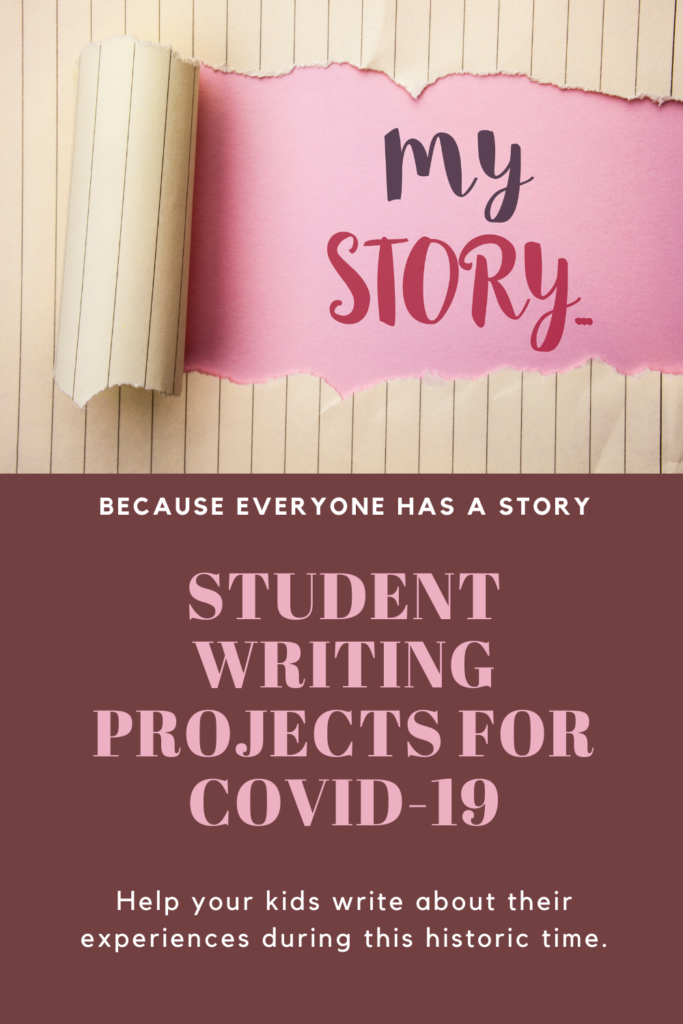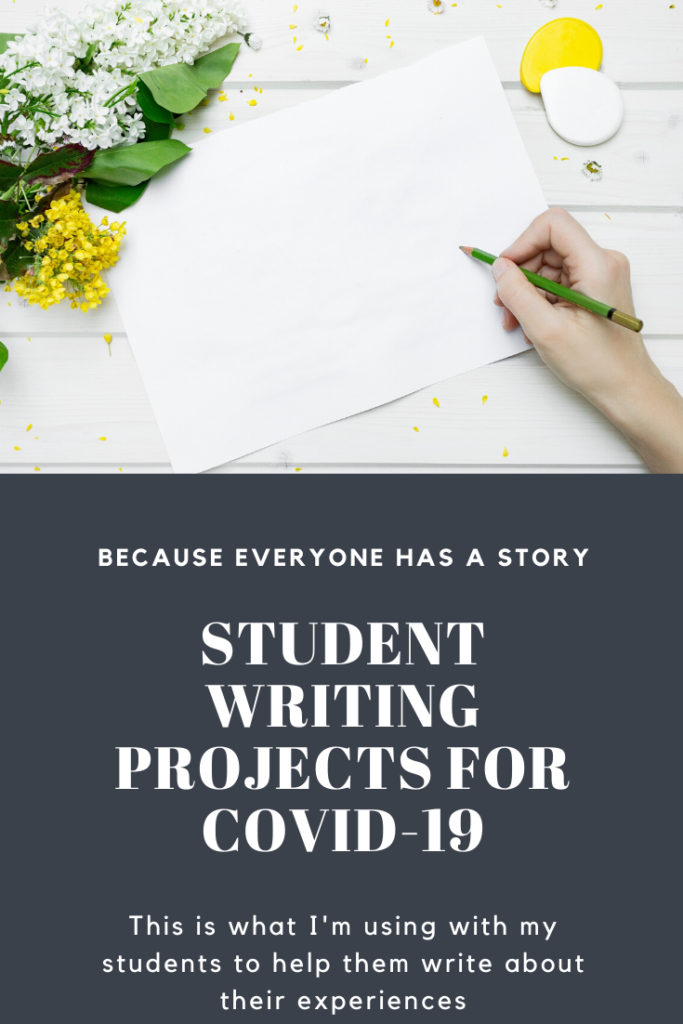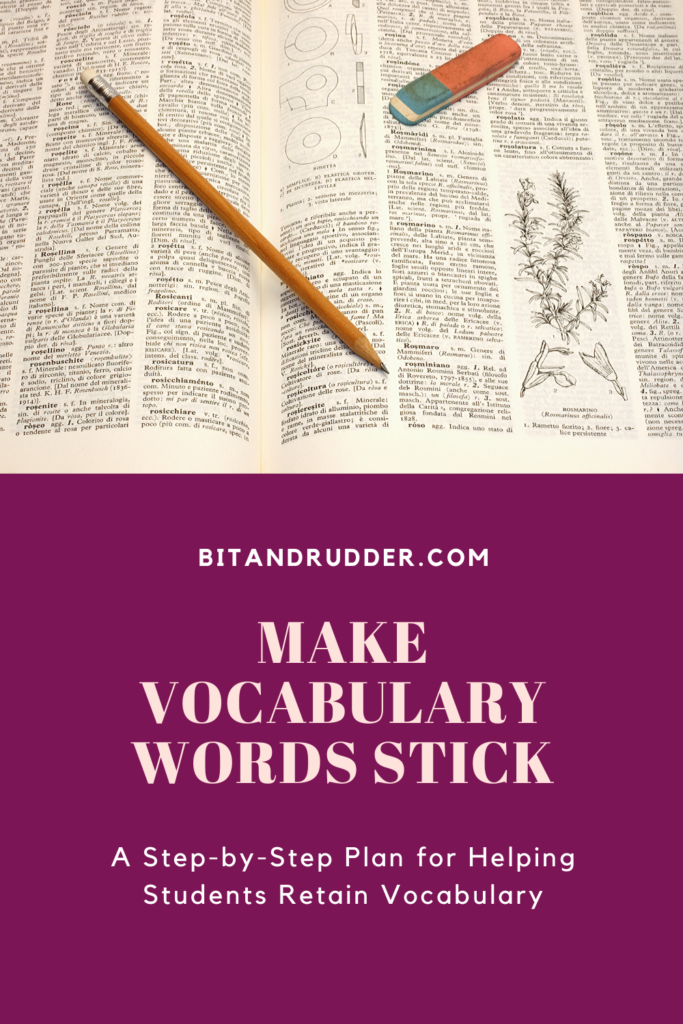In this episode, I discuss how to write a comparison/contrast essay, including how to choose a topic, how to organize information, and pitfalls to avoid.
Free Download: Comparison/Contrast Sample Topics List
Links Mentioned
Ruth · ·
In this episode, I discuss how to write a comparison/contrast essay, including how to choose a topic, how to organize information, and pitfalls to avoid.
Free Download: Comparison/Contrast Sample Topics List
Links Mentioned
Ruth · ·
Today I am talking about spooky short stories that students love. These are short stories that I love too, and all of them are classics, worthy of being studied as literature. I will tell you what I find valuable about them, and then I will give you some specific ways that you can use them in your literature and writing classroom.
In this episode, I discuss
✅how spooky stories have their roots in eighteenth-century gothicism
✅why short stories are great tools for teaching literary analysis
✅7 spooky stories that students can’t wait to discuss
✅3 specific writing activities to accompany each story
✅a literary element to focus on for each story
Links Mentioned:
Spooky Short Story Lesson Plan Free PDF
Twilight Zone Season 5, Episode 23 “An Occurrence at Owl Creek Ridge”
The Monkey’s Paw Short Story Film 1982
Ruth · ·
Episode #24 How to Write a Personal Narrative Essay
Have you noticed that stories are everywhere? Everyone loves a good story. Stories aren’t just for entertainment though. They also help us connect with people and make sense out of the world. Today’s topic is about the personal narrative—narrative is just another word for story—why it’s important for your student to learn to write this kind of essay and the practical steps for teaching it.
In this episode, I discuss
✅how a personal narrative is different from fictional storytelling
✅the tried-and-true formula that you can use for most narrative essays
✅the importance of descriptive language in narrative writing and a simple strategy for helping students prioritize it
✅where to go to find 500 narrative prompts and sample narrative essays
✅Plus, details on how to join me and my AP students for National Novel Writing Month
Links Mentioned:
Nanowrimo Young Writers Program
Western Technical College: List of Narrative Essay Samples
Oregan State University: 500 Prompts for Narrative and Personal Writing
Illustration of Descriptive Writing (Essay A, Essay B)
Ruth · ·
Have you tried out ChatGPT or other Generative Artificial Intelligence (GenAI)? If you have, you know that the things it can do are pretty amazing.
I remember my son Ty (PT major, fitness fanatic) raving about its capabilities shortly after it became freely available in November 2022, because it was able to “miraculously” create a custom-made meal plan and exercise program in about 2 seconds, saving him many hours of time and effort.
When I finally I got around to trying it out for myself more than a year later, I was equally impressed. But also concerned, as many educators are, about the potential for students to use AI unethically in their school work.
So I set out to learn all I could about GenAI, because I realized that I needed to have a policy statement in place concerning GenAI before my students began to work on their first essay of the year.
In this episode, I share my findings as well as the policy statement I developed. Some of the topics I cover are
✅Why some educators think the college essay is dead and that it’s time to blow up the current system of traditional writing and try something new
✅Why other educators think the college essay is NOT dead and that it’s more important than ever to teach traditional writing skills
✅How some educators are striving to find middle ground by combining GenAI with traditional writing instruction
✅Why students need to be careful when using Grammarly
✅The reasons that all GenAI is banned in my English classes
Now if it’s just you at home with your kids homeschooling, you probably don’t need to develop a formal policy statement. But I do think you need to think about what your stance is on GenAI and how much you plan to let your student use it, because the issue is not going away—it’s only going to escalate as GenAI gets smarter and more prevalent. You want to get in front of this issue rather than chasing it later.
Links Mentioned:
“The College Essay Is Dead.” By Stephen Marche
“The End of High School English.” By Daniel Herman
“The Case for Writing: Competency Is Essential.” By Annie Checkitelli.
“The College Essay is Not Dead: Using Scaffolding and Presentations to Create ChatGPT-Resistant Research Projects.”
“Why I’m Not Scared of ChapGPT.”
“1 in 3 College Applicants Used AI For Essay Help. Did They Cheat?”
“AI and the Death of Student Writing.“
“Oxford encourages students to use AI when writing essay“
“I’m a Student. You Have No Idea How Much We’re Using ChatGPT.”
“How AI could save (not destroy) education” TED Talk by Sal Khan
Ruth · ·
Have you ever been so busy getting things done that you lose sight of why those things matter in the first place? It’s easy to get caught on the hamster wheel of life and forget our purpose for running. So in this week’s episode, I’m taking a few minutes to reflect and catch my breath and remember the reasons that writing is so important.?
In this episode, I discuss
✅How good writing skills are essential for academic success even if you’re not a liberal arts major
✅How being a strong writer can help you land your dream job
✅The value of writing in day-to-day life
✅How writing can help you improve your vocabulary and become a better speaker
Plus much more, including suggestions for helping your student to focus on writing.
This episode will inspire you to make writing a top priority in your homeschool classroom.
If you are looking for some tools to help you with writing, then head over to my website, where you’ll find lots of free resources, including the thesis statement workshop which will walk you through the process of creating that crucial thesis statement, a skill that is fundamental to good writing.
The thesis statement workshop has plenty of examples and places for students to practice writing their own thesis statements. Plus an answer key for you. It’s a really great resource, so please take advantage of that.
Links for sources referenced in this episode:
How to Write Anything, by Laura Brown
2016 Study by the National Association of Colleges and Employers
Ruth · ·
Ep #21 Top 10 Mistakes Students Make in Their Writing
When you’ve read thousands of student essays as I have during my 20+ years of teaching, you don’t have to be a great detective to notice that the same mistakes keep cropping up.?️♀️? ?
Usually, I wait until after I’ve graded the first essay to begin addressing these mistakes, but this year, I’m getting in front of it and discussing these common errors before students hand in that first paper.
Now I know that me talking to students in advance is not going to magically prevent all the mistakes—they will surely need reminders—but I do think it will reduce the number of mistakes—and provide reinforcement of information that they’ve been taught previously.
In this week’s episode, I am sharing with you my Top 10 List of the mistakes I see students make in their writing. Being aware of these potential pitfalls can give you an edge in knowing what to look for in essays, and it a can also help you know what to focus on even before students write their first essay of the year.?
In this episode, I discuss
✅How having a strong thesis statement is the single best thing you can do for your paper. If you get that right, everything else falls into place. It is the cornerstone, the linchpin, the anchor, the backbone. Without it, the paper falls apart. (If you’re wondering how you teach students to write this crucial element, I’ve got you covered. Click here to get the Thesis Statement Workshop—it’s free!)
✅The parts of their grammar book students need to review before they write their first essay
✅When (if ever) you are allowed to use first person (I, We) or second person (you) in academic writing
✅How one pesky pronoun problem has been solved by a new pronoun rule
Plus so much more, including information about the new Thesis Statement Workshop which you can get your hands on right now for free! Just click on the button below, and I’ll send you the PDF. In it, you will find
Ruth · ·
Do you have a plan for how your children will learn and practice writing this year or are you still figuring that out??
I want to try to help you with that today by talking about some of the ways that people sabotage themselves in their thoughts about writing, and also some specific, practical ways that you can incorporate writing into your schedule this year.
In this episode, I discuss
It takes a minute to construct a good plan, but it saves you so much time and headache in the long run. I know you are busy, but trust me if will be worth it to come up with a good plan for your writing classroom.
To help you out with that, for the last time you can purchase my course Help Your Homeschooler Become a Confident Writer for the bargain price of $29.
Here is some of the value you’ll get in this course:
–Step-by-step guides for teaching a variety of essays
–Instructions for evaluating student assignments
–Focus skill lessons that address specific writing problems
–Complete workbooks for students and instructors
–A special bonus on journal writing
I created this course four years ago and even though it still has tremendous value, I’ve learned a lot since then through my own teaching experience as well as from feedback I’ve gotten about the course.
So that is why I am in the process of revising and updating it. But for a little while longer you can get this original course at the bargain introductory price of under $30.
Once I revise it, and redesign it, the price will go up significantly; so if you are looking for a deal, this is the time to act. ⏱️
Link to online course: Help Your Homeschooler Become a Confident Writer
Ruth · ·
Body paragraphs aren’t as flashy as introductions or conclusions, but they make up about eighty percent of any essay.
Eighty percent!
That’s a huge percentage, which means that we had better pay attention to them if we want our arguments to be strong and convincing.
So that’s what this episode is about: dissecting a body paragraph to see how it works and then using that knowledge to develop strong paragraphs of our own.
In this episode, I discuss
If you have wondered how to help your students develop their ideas into strong paragraphs, then this episode is exactly what you’ve been looking for. All you have to do is click play.
Ruth · ·
Imagine watching a thrilling movie that suddenly ends without wrapping up the storyline. Frustrating, right?
An essay without a strong conclusion feels like that: unsatisfying, incomplete.
Maybe your student is the exception, but I can tell you that most of the students I teach stumble over conclusions. Even strong writers often fail to make the last impression a good one.
This is not surprising: conclusions can be tricky to write. Believe me, I know. Conclusions are what always tripped me up in my own writing. But not anymore, because, finally, I understand the purpose of a conclusion and what my goal should be in writing it.
And that is what I am sharing with you in this episode today. So if you are a little fuzzy about the purpose of conclusions or how to direct students in writing them, then get ready to be amazed by this powerful content. Seriously, it is that good.
In this episode, I discuss
Plus so much more, including plenty of examples.
Links Mentioned
The Writing Center at the University of North Carolina at Chapel Hill
Ruth · ·
Episode 16 Thesis Statements
Today’s topic is thesis statements. I know. Not the most glamorous of topics, but an important one since thesis statements are the workhorses of the essay world. Exciting? Probably not. Essential? Absolutely. A strong thesis statement is often what makes an essay shine, and in this episode I share with you the method I use in my classroom to teach this important skill.
In this episode, I discuss
I think that learning to write a strong thesis statement is one of the best things students can do to improve their writing and create shining essays.
Email me at ruth@bitandrudder.com
Links Mentioned
OWL (Online Writing Lab at Purdue)
Ruth · ·
Ep #15 Research Papers Part 3
Today’s episode is the last of three parts in the Research Papers series. Be sure to listen to Part 1 and Part 2 first because they lay the groundwork for today’s discussion.
In this episode, I share with you
This is another meaty episode with a wealth of information. You probably will want to take notes, and you’ll also want to grab the free Research Paper Checklist to help you remember the steps and stay organized.
Links Mentioned
Research Paper Checklist
OWL (Online Writing Lab at Purdue)
Ruth · ·
Ep #14 Research Papers Part 2
As promised, this week’s episode is Part 2 of how to teach a research paper.
I know as a homeschool parent, I was very concerned about making sure my own children were prepared for college writing. Being able to write a successful research paper was one crucial component, and I am sharing with you the steps I use in my classes year after year to make this process a whole lot easier. In Part 1, I talked about choosing a topic, developing a working thesis statement, and finding credible sources. You should listen to that episode first if you haven’t already.
In this week’s episode, I share with you
This is another meaty episode with a wealth of information. You probably will want to take notes, and you’ll also want to grab the free Research Paper Checklist to help you remember the steps and stay organized.
Click here to get the free Research Paper Checklist.
I will be wrapping up this topic next week as I teach you how to help students integrate their research to produce stellar research papers. Until then, have a marvelous week.
Links Mentioned
Ruth · ·
Ep #13 Research Papers Part 1
As a homeschool parent teaching your high school student to write, what would you say is your top concern? If you said anything related to writing a research paper, then I have some good news for you.
First, you are not alone: research writing makes the “Top Ten” list of concerns that homeschool parents have about writing (this is based on a list compiled by ChatGPT).
And second, this week’s episode was created with you in mind as I’m answering all your questions, or at least a lot of them, about how to teach a research paper.
In this episode, I discuss
· Why learning to write a research paper is so important
· How to choose a topic and construct a working thesis statement
· Why you need credible sources and where to find them (NEWS FLASH: Wikipedia is NOT a credible source!)
If you’re like, wait a second, I also need to know how to teach notetaking and citing sources, so where’s that information? No worries, I’ll be talking about those topics and so much more over the next two weeks. The topic of research papers was too BIG and IMPORTANT to cram into one episode (or even two!)
To go along with this three-part series, I have created a free resource for you that you might want to download ahead of time. It is a roadmap to the research process, and you can use it to jot down notes as well as your own ideas as you listen to this episode.
I won’t pretend that research writing is easy, but I can assure that following my step-by-step process will make it a lot less overwhelming.
Links:
Research Paper Checklist
List of current events topics
“Five Must-Have Google Search Tips for Students”
Find It Virginia Explora Libraries Database
Ruth · ·
Ep #12 Summer Writing Activities
I love summer break. Three months of sunshine, ice cream, and baseball. And no school! Bring it on!
Everything is great, for a little while, but inevitably, the long days of summer lead to the bored kids of summer. At least that’s how it was in my house.
That’s when I learned the magic of doing just a little of school each day, not enough to feel like we were working very hard, but something with an educational twist, like an extended story time or figuring out a few math problems.
Plus, children are less likely to forget skills (reading, writing, arithmetic) if they are practicing them.
All this makes summertime the perfect time to try out some writing activities that you might not make time for during the regular school year.
In this episode, I discuss
Click below for the free resources mentioned in the episode.
Summer Projects Structured Journals–FREE PDF DOWNLOAD
The Pilgrim’s Progress Writing Ideas–FREE PDF DOWNLOAD
Ruth · ·
Homeschoolers are often in a quandary when it comes to proving their excellence as students. How do you convince the scholarship committee or the college admission board that you really are a superior candidate when your mom is the one writing your transcript? One way that students can prove their merit is by taking AP courses and doing well on AP exams. But figuring out this process as a homeschooler can be little tricky and confusing, which is why I decided to devote an entire episode to this topic. In it I discuss
I don’t cover everything there is to know about AP English, but I did pack the essentials into this no-nonsense discussion.
Ruth · ·
Ep #10 Lessons from Pollyanna
Show Notes
Today’s episode is special because it’s my tenth episode—woo hoo! cue the confetti!—and because I am talking about a book that is near and dear to my heart. You know how sometimes the right book comes along at the right time and it’s, well, . . . transformational. That’s what Pollyanna was for me, and I think after you listen to this episode, you will be rushing to the library or bookstore to snag your own copy. You can also read it for free online here.
Although this episode is a departure from the way I usually teach, I hope you will be inspired by this honest discussion of hardship and of faith and of how one book can change your perspective on everything. In it, I discuss
Intrigued? I hope so. You won’t want to miss this episode.
Read Pollyanna for free online here.
And in case you missed it last week,
Here is the link to the free Peer Editing Guide
Ruth · ·
Ep #9 Peer Editing in a Homeschool Context
Show Notes
If you want to learn a strategy that will help students transform their papers from mediocre to excellent, then this episode is you!
In this episode you will learn
Plus I give you suggestions for how to implement peer revising even if you aren’t part of a larger group or co-op.
Here is the link to the free Peer Editing Guide
Ruth · ·
Ep #8 Writing Thank You Notes
Show Notes
In this episode you will find an overview of my professional writing course plus a close-up look at the ins and outs of writing thank you notes.
In this episode you will learn
Plus I give you an easy list of do’s and don’ts for writing thank you notes that you can use to help your kids develop this important habit.
Links mentioned
How To Write Anything: A Complete Guide by Laura Brown
https://www.goodreads.com/book/show/34068526-how-to-write-anything?ref=nav_sb_ss_1_21
Ruth · ·
Ep #7 Vocabulary Development
Show Notes
Did you know that English has well over a half a million words? Let that number sink in for a minute. This is far more than French which has fewer than 100,000 or even German which has around 185,000. Half a million words! That’s a lot of vocabulary.
Obviously, you can’t expect your child to learn all the words; even 100,000 would be way too many. But you do want your kids to have good vocabularies, the kind that helps them read with comprehension, write with confidence, and converse with intelligence. The problem is that vocabulary programs often fall short with their canned approach of word lists, exercises, and tests. While they offer a good launching point, what students really need is more interactive engagement to help them cultivate a fascination with words.
But interactive engagement takes time, you say. And you are right, but probably not as much time as you think. In this episode, you’ll find strategies that take no more than 10 minutes. Now I know you can find 10 minutes in your schedule for something as important as vocabulary development.
In this episode you will learn
If you are ready for an easy way to spice up your vocabulary instruction, then you’ve come to the right place.
Links mentioned
Bringing Words to Life: Robust Vocabulary Instruction by Isabel Beck, Margaret G. McKeown, and Linda Kucan
https://www.goodreads.com/book/show/129578.Bringing_Words_to_Life?ref=nav_sb_ss_1_22
Academic Vocabulary in Middle and High School: Effective Practices across the Disciplines by Donna Ogle, Camille Blachowicz, Peter Fisher, and Laura Lang
Ruth · ·
Ep #6 How to Have Students Write about What They Read—Part 2: Writing as You Go
How often are you having your kids write? If you said, not often enough, then this might be the episode for you! In it, I discuss of a variety of ways that you can incorporate writing into your reading/literature curriculum. So whether you want your child to write every day or just once a week, you’ll find a strategy to help you reach your goals.
Here are the 10 choices I explain in this episode:
Organization plan:
Introduction–Summary statement about the author including birth/death dates and what the writer is most famous for
Body paragraphs–Childhood and early life; writing career
Conclusion– Anecdote/interesting story/or several interesting things to know about the author
You can use these strategies over and over again with any kind of longer fiction.
Links mentioned
The True Story of the Three Little Pigs by Jon Scieszka
https://www.goodreads.com/en/book/show/55618025
Tone Charts
Ruth · ·
#5 How to Have Students Write about What They Read—Part 1: Writing at the End
This year I get to teach so many incredible works of literature: Beowulf, Macbeth, and To Kill a Mockingbird to name a few. And of course I want my students to be totally enraptured by everything I assign. (If only!) I know that one of the best ways to get them to engage deeply with the texts is to write, write, and write some more. Sure, they may grumble a little from time to time—literary analysis is exhausting work after all—but the more they fatigue those brain muscles, the stronger they grow as thinkers and as writers. They learn to build better arguments and examine complex issues more deeply.
Because I know writing is so important, I spend a lot of time thinking about how to integrate it into my reading assignments. In this episode, I’m going to share with you some of the elements I return to again and again. These ideas are by no means original with me. In fact, if you’re looking for wildly creative, outside-the-box writing suggestions, then you’ve come to the wrong place. Instead, I’ve put together a selection of tried and true ideas that have been used by many an English teacher throughout the years. Most of them will work with a variety of texts and all of them are homeschool friendly and easy to use.
This episode focuses on writing that you can assign after a student has completely finished reading a text. (In the next episode, I’ll share ideas that you can use as the student reads each chapter or section.)
In this episode, I discuss
Links mentioned
Teachers Pay Teachers
Ruth · ·
#4 How to Teach Writing to Middle School and High School Students: Step 5—Evaluation
Step 5: Have a plan to evaluate student writing
Would you rather grade a math test or an English paper? I bet you said math paper, right? With its very convenient answer key and one correct solution for each problem. No sweat.
Grading essays is a whole other story. Because there isn’t just one correct way to write an essay—there are so many variables, and what standards are you supposed to use anyway? How do you tell the difference between a “good” paper and a “bad” one? And then how do you explain to your student what they need to work on to improve for next time?
If you are nodding your head because you can identify with the struggle, then you are going to love this episode because I explain how to use a simple grading rubric to evaluate most kinds of writing. Don’t worry if you aren’t familiar with the term “rubric.” I’ll let you know what it is it and tell you exactly how to use it.
In this episode, you will also learn
If that sounds good, you’ll definitely want to download the two PDFs that go with this episode:
I’ll be referencing those documents during the episode, so you’ll want to grab them ahead of time if you can.
That brings us to the end of the four-part series on how to teach writing to older students. Here are the steps one more time:
Step 1: Have students keep a structured journal (episode 1)
Step 2: Understand the writing process and help your students apply it to their writing (episode 2)
Step 3: Learn the main types of writing (episode 3)
Step 4: Plan out your writing calendar—how many papers and which kinds of assignments (episode 3)
Step 5: Have a plan for how to evaluate student writing (episode 4)
Remember, it’s not enough to have a good plan. You have to get in motion. You don’t have to wait for the beginning of the school year to start. You can start today, or at least tomorrow, with the journal writing plan.
I hope you feel empowered and ready to make writing a priority. You can do it!
Links mentioned in this episode:
Ruth · ·
#3 How to Teach Writing to Middle School and High School Students: Step 3 and Step 4—Types of Writing and Planning Your Calendar
This is how you plan out your writing curriculum for the entire year.
Are you excited to set up your writing classroom? I love this episode because it brings everything I’ve been talking about together into one comprehensive plan. And you know what they say: those who fail to plan, plan to fail. The value of a well-thought out plan especially in the hands of a busy homeschool mom is almost priceless. But no matter how good the plan, you must follow through with it for it to be a success.
I wanted to make sure I said that, because I think that without a plan, failure is almost inevitable, but even with a plan, success isn’t automatic if the plan just sits in its shiny box and is never taken out and implemented. So part of your plan has to be taking action.
In this episode, I’ll share with you
Obviously, you need to know what your options are if you’re going to make writing assignments, so that’s what Step 3 is all about—getting familiar with the main types of writing. I explain them in detail with plenty of examples.
Finally, in Step 4, it’s time for you to set up your calendar, deciding exactly which assignments you will make and when you will assign them.
And just like that, you have a plan!
Links mentioned in this episode:
Ruth · ·
#2 How to Teach Writing to Middle and High School Students: Step 2—The Writing Process
Understand and use the writing process
My goal in this series is to give you—the homeschool parent/teacher—a straightforward, tactical plan for teaching writing to older students. In the last episode, I explained how easy and effective structured journals can be, especially if your child lacks confidence as a writer. Journals aren’t exactly magical, but pretty close—and so very easy to implement.
So that brings us to the next step which is all about the process of writing—and it has steps too—perfect, right? Because steps give us a pathway—from blank page to finished product.
In this episode, I talk about
In this nuts-and-bolts episode, I take you through every step of the writing process
And I provide plenty of examples so you can see this powerful tool in action!
Be sure to grab the cheat sheet I created for this episode, so you can practice the writing process for each and every writing assignment.
Links mentioned in this episode:
The Writing Process Cheat Sheet (Episode 2)
Episode #1 How to Teach Writing to Middle and High School Students: Step 1—Structured Journal
Ruth · ·
#1 How to Teach Writing to Middle School and High School Students: Step 1—Structured Journals
This strategy helps students practice writing without the fear of failure.
Confession: I avoided teaching my kids to write for years because I was so overwhelmed with the process. Oh sure, I had a curriculum, more than one even, and every year I promised myself that this was the year we were going to write. Usually, though, we didn’t make it past lesson 3 because it was too confusing, time-consuming, daunting, difficult. You get the idea!
If this sounds familiar, then you may find that this episode gives you exactly what you need to break through the confusion and prioritize writing this year.
Because let’s be honest, teaching writing can be tricky—there are A LOT of moving parts. If you don’t have an easy-to-use plan, it’s hard to keep moving forward.
In this episode, you will learn
If this sounds too good to be true, I can assure you I have seen the results first hand, with my own children and in English classes I’ve taught.
I won’t keep you in suspense any longer. The tool at the center of these great results is a structured journal. The “structured” part of that is very important as I explain in the episode, because journal-keeping without clear guidelines can be a big waste of time.
But I’ve got you covered with exact guidelines for assigning journals, plus all the prompts you need and instructions on how to grade student entries. It’s all laid out in this episode, but I’ve also created a FREE Journal Writing Guide with all the information you need to get started.
So if you’re ready, it’s time to learn all about how to set up your writing classroom.
Links mentioned in this episode:
Journal Writing Planhttps://marvelous-artist-7428.ck.page/713dbe727c
Journal Buddieshttps://www.journalbuddies.com/
Ruth · ·

To help students develop a habit of writing
4 weeks
A notebook, composition book, or binder/folder with notebook paper; a pen
3 times a week (the schedule is flexible—three days in a row, every other day, etc.; however, it is better to write on three different days rather than do multiple entries on the same day)
Tell students they will be writing journal entries for the next 4 weeks. They should
Inform students that you will not be reading their journals unless they want you to read them. (Please honor that agreement.) However, you should also let them know that you will be checking the journal entries for completion and that you may ask them to summarize their entries (out loud) or read a sentence or two (out loud). You might even count the words if their entries seem short! Checking the journals each week only takes a minute and provides valuable accountability for your students. Remember, the goal is to get them in the habit of writing, and you can help them build this habit by regularly checking on their progress.
The prompts are organized to promote different kinds of writing:
Week 1: Descriptive
Week 2: Narrative
Week 3: Expository
Week 4: Persuasive
After a month or two of journal writing, consider adding a longer weekly writing assignment that you will direct, read, and evaluate. For help with this, see my Basic PLUS Writing Plan.
Continue to assign journal writing but reduce the number of weekly entries. I have my students do journal writing year round, but they are only required to submit two entries each week. Many students find that they enjoy journal writing after they get into the habit of it—in fact, some of them write more than they are required to do.
For more discussion of journal writing, see my article.
If you enjoyed this article, please let me know by leaving a comment. Also, would you consider subscribing to the newsletter I publish each week. Each issue contains one quote, one tip or strategy, one resource, and one journal prompt. But not one wasted second! It’s my way of offering a little bit of encouragement and direction each week. Because we all need that!
Ruth · ·

Have you ever wondered if you are adequately preparing your child to write successfully for college English classes? I know that I worried a lot about that. The first college class my oldest child enrolled in was Composition I at the local community college. He was a senior in high school at the time, participating in the dual enrollment program. As it turned out, college composition classes hadn’t changed that much from what I remembered teaching years ago when I was a college writing instructor. The writing assignments were similar, and students still struggled with the same issues. In the list below, I’ve identified five common problems that appear frequently in student essays, along with ways that you can get in front of these problems and help your high schoolers prepare for college composition.
The problem: Formulaic essays such as five-paragraph essays often stifle creativity and limit critical thinking. At the college level, instructors expect students to investigate a topic beyond a superficial level. Students should be asking “why” questions and then attempting to answer them.
The fix: Encourage students to explore their ideas creatively without being constrained by the form of the essay. Of course, they need to practice making and supporting logical arguments, but there are many ways to accomplish this outside a five-paragraph essay.
The problem: Many writing assignments require textual analysis, an exercise that is almost impossible without close reading of the text.
The fix: Train students to overcome their laziness, lack of interest, or poor time management so they can focus on the details of their reading. Taking notes, asking questions, and tracing themes are all ways to stay engaged with the text.
The problem: Students rarely have much experience writing research papers using multiple sources, so they have trouble choosing credible evidence. They also depend too much on online materials and fail to consider print sources. In addition, they are confused by what they need to document and how to write citations.
The fix: Help students learn to use the library, so they can take advantage of the many books, journals, and reference materials that usually serve as quality supporting documents. It is also a good idea to have students write at least one research paper in high school, so they can practice evaluating the credibility of online sources as well as following a documentation process. The Purdue Online Writing Lab is an easy-to-use resource for learning exactly how to write citations.
The problem: Students either fail to remember that their writing has an audience, or they write to the wrong audience. For example, they might make the mistake of a writing science report in the same casual style that they would use for an email message. This is a particular problem for homeschoolers who are used to writing only for Mom.
The fix: Train students to be mindful of audience every time they write. For example, have them practice writing about the same topic for different audiences, such as describing a vacation at Niagara Falls to someone who has never been there, and then describing it to someone who used to live there. Lead them to discover how the writing choices (such as which details to include or exclude) change depending on audience.
The problem: The writing process has five steps—prewriting, drafting, revising, editing, publication—but students usually focus only on drafting part while ignoring the others.
The fix: Emphasize the importance of the other steps—not just writing the draft. Require students to show you their prewriting work which should include brainstorming ideas, developing a thesis, and arranging details to support a thesis. If proper attention is paid to prewriting, the draft should be easy to write. Have students write their drafts in one sitting without any revising or editing and then set the papers aside for at least a day. At that point, they should read them again, looking for areas to improve. Some students mistakenly believe that revising a paper means sticking in a comma or two and maybe changing a verb tense. However, that is editing, not revision. Revision involves rearranging sentences, adding and deleting content, and making different word choices. Students’ revised papers should look substantially different from their drafts. Once the revision is complete, then students can look for places where they need to insert commas or make other edits.
Following these tips will help students improve their writing skills and be better prepared for college-level classes.
For more ways to help students practice writing, see the Writing Plans.
Ruth · ·
Have you ever wondered what it might look like for a homeschooled student to use writing as a form of ministry and public communication? In today’s episode, I talk with Melody Poehler, a recent homeschool graduate and former student of mine, who shares her journey from English class to Christian blogging.✨
Melody started her blog, Roses in a Thorny World, at just sixteen years old. In this conversation, she walks us through how she launched her blog, how she built an audience, and how she keeps going even when life gets busy. But what stood out most? Her deep understanding of writing as both personal expression and spiritual encouragement.
🎧 In this episode, you’ll hear:
Whether your student dreams of writing fiction, keeping a journal, or encouraging others through devotionals, Melody’s story offers practical ideas and heartfelt encouragement. Her voice is fresh, faithful, and full of wisdom beyond her years.
Links Mentioned
Ruth · ·
How important is a letter of recommendation? Well, it depends. If you’re trying to get a job at McDonald’s, it probably doesn’t matter that much.
But if you want to get into a competitive program such as med school or law school, or if you’re applying for a scholarship, it matters a lot.
A strong letter of recommendation can tip the scale when applicants have similar GPAs and test scores, or when a selection committee needs to assess character and leadership abilities.
This week’s episode is about the real-world skill of requesting a letter of recommendation. I discuss:
☑️6 key strategies to guide your request
☑️how far in advance of the deadline you should submit your request
☑️the importance of humility, helpfulness, and gratitude in crafting your request
☑️the specific details you must include if you want a strong recommendation
I also provide a step-by-step process for drafting a request as well as an example request that you can use as a model.
Ruth · ·
Episode #27 Writing Dread and How to Handle It
Things on my dread list:
—making phone appointments (I know, I know, a little bit silly, but it’s something I have to force myself to do)
—dusting (people in my house have been known to write fun messages like “dust me” on some long-neglected surfaces)
–and, at the top of the list, grading papers (I love to teach, but dread the paperwork)
We all have things we dread. For some students, writing is at the top of the dread list. So what do you do when you have a student who dreads to write? That’s what I’m talking about in this week’s episode.
In this episode, I discuss 4 reasons that students dread to write:
☑️lack of clarity
☑️not enough practice to get into a groove and develop confidence
☑️viewing writing as a product rather than as a process
☑️believing that writing is a waste of time
Plus, I provide a list of strategies you can use to help students overcome their dread of writing.
Resources mentioned:
The War of Art: Break Through the Blocks and Win Your Inner Creative Battles, by Steven Pressfield
Ruth · ·
Do you want to know the secret to helping students perform better on writing assessments?
Teach them to write strong introductions.
Studies in education show that a good introduction helps in structuring thoughts and arguments more effectively. And that leads better writing overall.
But what if you have a student who struggles to write introductions?
This is a very common problem I see in my students every year, which is one reason I created this episode.
Not only will you learn effective strategies for writing great introductions but also what practices lead to bad introductions.
In this episode, I discuss
This episode walks you through exactly what you need to know to teach this important skill.
Ruth · ·
Ruth · ·

Assignment: Describe someone who has been an important influence in your life.
Length: 300-500 words
Audience: Formal/Academic (imagine writing this essay as part of a scholarship application)
Instruction: Descriptive writing is about painting a picture for the reader. To do this, you want to use language that appeals to the five senses. The prewriting questions will guide you through this process.
If possible, write the essay in one sitting. Focus on ideas and organization rather than on mechanics and style.
The essay needs a minimum of three paragraphs—an introduction, body, and conclusion. However, there is no set number of paragraphs.
Introduction The goal of the introductory paragraph is to grab the reader’s attention and state the purpose of the essay.
Ways to grab the reader’s attention:
–start with an interesting detail about the person
–start with an interesting (and relevant) story about the person
Purpose:
–make a general statement (in a sentence or two) about who this person is and how he or she has influenced you.
Body: The body should describe the person and explain in detail the reason or reasons that this person is influential. For example, let’s say you are writing about the influence your grandmother has had in your life. Grandma is important because she always makes you feel loved and appreciated. She shows her love by taking the time to listen to you and by sending you special gifts. Those are the general statements that need to be described in detail. Here is an example of a paragraph that develops one of these statements.
Because Grandma believed that “idle hands were the devil’s workshop,” she was always busy, whether it was baking her famous apple turnovers or scrubbing a pile of dirty dishes. But no matter how busy she was, she always had time to listen to me. She would stop whatever she was doing, pull off her grease-stained apron, and give me a big bear hug. Then she’d invite me to sit on the settee with her and have a cookie and a cup of milk while I told her what I’d been up to lately. …
This paragraph can be further developed with additional details that reveal more of the grandmother’s character and influence. Perhaps Grandmother not only listens but also gives valuable advice, and so on. After this idea is developed, move on to the next point about Grandmother sending gifts and provide details about that idea. Continue to develop each point in this way.
Conclusion: The concluding paragraph wraps up your paper, usually by circling around to the beginning and restating the purpose in different words. An interesting detail or illustration about the person that ties in with your main idea is a good way to close.
If time permits, allow at least a day to pass before students revisit their drafts.
Students should read through their drafts and make improvements. They should also have at least one other person read their essay and make suggestions for improvement.
The draft should be considered a working copy, and as such, students should mark it up with margin notes, arrows, crossed out words, and so on.
After students are satisfied with the revisions, they should create clean copies suitable for publishing. The final step in this part of the process is for students to read their papers out loud because this will help them catch mistakes that they will miss if they only read silently
Students should share their essays with others.
To see the complete guide for evaluating this essay as well as information for writing other types of essays, follow this link: The Basic PLUS Writing Plan.
Ruth · ·

We are taking a break this week from writing about COVID-19 and turning our attention to persuasive writing. This is the essay assignment my writing class is working on. To see more assignments like this as well as a guide on how to evaluate/grade this assignment, see the Basic PLUS Writing Plan.
Assignment: Write a review of a book, movie, restaurant, play, video game, concert, music album, etc., in which you make a recommendation in favor of or against it.
Audience: Formal—imagine you are writing a newspaper article for an audience that is unfamiliar with the work you are discussing
Length: 300 to 500 words
Instruction: Students should give a brief summary of the work and provide evidence that supports their recommendations. A statement such as “this work didn’t speak to me so you probably won’t like it either” is not evidence and is unlikely to convince anyone. Instead, say something like “the dialogue between the characters was stiff and unnatural—this made the characters awkward and difficult to relate to.”
Start by making lists of works you liked and didn’t like.
Works I especially liked:
Works I especially disliked:
Choose the work you want to write about
With that work in mind, use the prompts to help you develop the content of your essay
Reason 1:
Evidence:
Reason 2:
Evidence:
Reason 3:
Evidence:
Reason 4:
Evidence:
Reason 5:
Evidence:
If possible, write the essay in one sitting. Focus on ideas and organization rather than on mechanics and style.
Introduction: The first paragraph needs to hook the reader, introduce the subject, and take a position on the subject (recommend it or not recommend it).
One way to grab the reader’s attention is to make a surprise statement that goes against general opinion or approaches the subject from an unusual angle.
You may also want to include a brief summary of the work you are reviewing.
By the end of the first paragraph, it should be clear whether this will be a positive or negative review.
Body: The body of your essay should contain the evidence that supports your position. Discuss each reason in a paragraph. Use the information that you listed at the end of the prewriting activity to develop each paragraph.
Conclusion: The concluding paragraph wraps up your paper, usually by circling around to the beginning and restating the purpose in different words.
If time permits, allow at least a day to pass before students revisit their drafts.
Students should read through their drafts and make improvements. They should also have at least one other person read their essay and make suggestions for improvement.
The draft should be considered a working copy, and as such, students should mark it up with margin notes, arrows, crossed out words, and so on.
After students are satisfied with the revisions, they should create clean copies suitable for publishing. The final step in this part of the process is for students to read their papers out loud because this will help them catch mistakes that they will miss if they only read silently.
Students should share their essays with others.
For more ideas and writing assignments, see the Basic PLUS Writing Plan.
Ruth · ·
Project 4: How Are You Feeling?

I created a group of COVID-19 writing projects to help my kids preserve their memories about this historic time. That’s what you get when your mom is your English teacher! The project I’ve included here is a guided essay that will help students evaluate their feelings about this experience.
Instructions
Write an essay that explains your feelings about the COVID-19 situation. Write a paragraph to answer each question. When you are finished you should have eight paragraphs. The words in parentheses suggest a way to start your paragraph, but you do not have to use it.
Paragraph 1: What has been the hardest part of this situation? (The hardest part of the COVID-19 crisis has been …)
Paragraph 2: What has made you angry/upset/frustrated? (Something that has frustrated
me is …)
Paragraph 3: What has made you afraid or worried? (The thing I’m most afraid of is …)
Paragraph 4: What has made you sad or depressed? (I am sad when I think about …)
Paragraph 5: What has surprised you about the situation? (I didn’t expect …)
Paragraph 6: What has brought you joy or happiness in this situation, or what have you had fun doing? (In spite of the circumstances, I have enjoyed …)
Paragraph 7: What silver lining have you found in this situation? What are you thankful for? (Something good that has come out of this is …)
Paragraph 8: What have you learned from this situation? (This pandemic has helped me to realize…)
The other projects are available in the FREE PDF download. You can print as many copies as you need to help your kids write about this historic time.
Ruth · ·
This is the writing project my English class is working on this week. It is designed to help students capture what their daily life is like during the pandemic while also practicing skills related to narrative writing.

Write a narrative about what a day in your life is like in light of the stay-at-home orders which have been issued for many people. This essay can be about a typical day or it can be about an unusual day. Either choice is fine as long as you keep in mind that a narrative is a story—and a story needs to have a beginning, a middle, and an end (although not necessarily in that order).
300-500 words
These questions will help you think through your daily activities.
Do you follow a set schedule each day?
What time do you get up?
When do you do school?
Do you have chores that you do?
Do you go outside?
Are you getting any exercise?
What are your online activities like?
Do you practice spiritual devotions such as reading Scripture or prayer?
Do you have hobbies or extracurricular activities such as piano practice?
Do you play any games?
Do you entertain siblings or babysit?
Do you play with pets?
Do you read?
Do you cook?
Do you watch TV or online shows?
Do you have meals with your family?
Are you helping someone in your community?
Have all the days since the COVID-19 measures been about the same?
Were there any unusual days?
What was the first day like?
Is there a day that has been particularly challenging or difficult? Or particularly good?
Remember that this essay is a narrative, so it needs to tell the story of your day. An easy way to do this is to organize it chronologically: “First I do this. Next I do this.” And keep going in order. You could also start in the middle, maybe with the most exciting part and then jump back to the beginning. But that’s a little trickier to do, and you have to be careful with transitions or you will confuse your reader.
I’ve created a complete project guide to help students write about their experiences with the COVID-19 pandemic. Click below to access this free resource.
Ruth · ·
Student Writing Projects for the COVID-19 Pandemic of 2020

What’s your favorite time period to study? For me, it’s Colonial America. I love reading about John Smith and Pocahontas, the voyage of the Mayflower, and the founding of the thirteen colonies. Right now, we are living in historic times. The young people of today will likely be telling their children and grandchildren about the great pandemic of 2020. The statistics about coronavirus, such as how many people were infected or how many people died, will tell only part of the story. The rest of the story—the heart and soul of it—will come from the ordinary people whose lives were upended as the world closed down. That’s most of us.
What a shame it would be for kids to miss the opportunity to preserve a slice of history for themselves and for posterity. This guide offers a simple roadmap for doing just that. But more than that, it provides a place for students to explore their thoughts and feelings about this disruptive experience. Writing about difficult and confusing matters often results in clarity and even consolation. I hope that will be the result for every student who embarks on this project.
For parents (and teachers) who want their kids to practice writing, this guide offers a broad range of structured assignments with specific instructions for each one. There are nine projects total, and except for the last one, can be done in any order. Project 9 is designed to be completed once the COVID-19 crisis has ended.
Here is a quick look at the projects:
Project 1: Before and After (compare/contrast)
Project 2: Big Picture (summary)
Project 3: A Day in the Life (narrative)
Project 4: How Are You Feeling? (analysis)
Project 5: Buzzwords (definition)
Project 6: Comic Relief (research/expository)
Project 7: Government Response (advanced—research/persuasive)
Project 8: Journal Entries (variety)
Project 9: A Retrospective (revision/analysis)
Here is an example of one of the projects from the guide. This is the assignment my students are working on this week.
Instructions: Write about three things that changed in your life (or the life of your family) once COVID-19 became a serious concern. Make sure you explain what life was like before each of these changes occurred. For example, before COVID-19 most college students attended lectures on campus, but now they have to view teaching online.
Length: At least three paragraphs
Quick Process
Prewriting: Brainstorm a list of all your activities. Consider school, church, extracurricular, volunteer, work, and social activities.
Drafting: Discuss each point in a separate paragraph. Remember to describe what the activity was like before the change. Give at least two details about each change. Here is an example that adds details about college classes being online:
College campuses have closed down so all classes are online. Some professors are pre-recording their lectures, while others are having class in real time using an online video service such as Zoom. Science courses with a lab component pose a particular challenge, and professors are scrambling to figure out ways to make credit-worthy online versions.
The PDF download contains all the projects. It’s free, and you can print out as many copies as you need and get your kids writing today.
Ruth · ·

Spring cleaning time has arrived. This afternoon my husband tackled the garage because he was tired of not being able to find tools when he needed them. Our garage is more of a storage unit than anything else. If you don’t know where to put something, it lands on a pile in there. A major part of bringing order to the chaos is deciding what to keep and what to throw out. Do you keep the bottom tray for a microwave you no longer possess on the off-chance it might possibly be useful? Or do you commit to the decluttering process and get rid of the deadweight so you can easily locate the important items?
In a similar way, writing is often weighed down by useless language that contributes little to the meaning and obscures the important information. One quick way to improve your writing is to declutter your sentences.
Be concise—eliminate unnecessary words
“How long does it have to be?” That is usually the first thing students want to know when I hand out a writing assignment. I used to cringe at that question because I know that writing flows best when it isn’t reaching for a word count. On the other hand, it helps to have a guideline so you know how large the scope of your paper needs to be. A 500-word essay on Mark Twain is going to require a different approach than a 5000-word research paper. But if I give a word count, I know that I’m going to get sentences that are padded with a bunch of unnecessary words.
Occasionally, I get a student who has too much to say and needs a word count for restriction, but in my experience, most students are struggling to generate content. For example, say they’ve been given an assignment that is supposed to be 300 to 500 words long. That seems like a nice range. But inevitably, after counting it up three times, they find they only have 270 words. Since they have not met the minimum requirement, what they should do is either come up with another point to discuss—after all, they are a LONG way from exceeding the maximum word count—or develop an existing point in more detail.
Unfortunately, students rarely choose these options. Instead, they look for places where they can add extra words that contribute nothing to the meaning and often detract from the clarity of the essay. “It took a long time” becomes “It took a very, very long time.” Why say concisely, “he was perplexed” when you get closer to the assigned word count by saying, “he was at a loss about what to do”? Thus, the essay becomes populated with extraneous language to meet a minimum word count.
One easy way to improve any essay is to eliminate filler words. Obviously, there are occasions when these words might be appropriate. However, the majority of the time, they add little meaning and obscure the content. Here is a list of some of the biggest offenders:
In addition to reducing filler words, students can improve the quality of sentences by choosing precise verbs to convey meaning, such as the use of “perplexed” in the above example. Also, beware of –ly adverbs. Instead, choose a strong, precise verb that makes the adverb unnecessary. (For example, “he ran quickly” is better phrased as “he sprinted.”)
Cleaning out the garage is going to take much longer than one afternoon. However, students can quickly spruce up their sentences if they throw out the filler words.
Are you looking for other ways to help students improve their writing skills? I’ve put together a free resource called “5 Mistakes Students Make in Academic Writing.” In it, I explain the strategies I’ve used with my own students to help them write more concisely.
Ruth · ·
Welcome to My Blog
I know you are probably busy juggling 50 different things right now. Driving kids to co-ops and practices, trying to get that last math test graded. And thinking about dinner. Do you have what you need to throw together a meal, or do you need to figure out how to swing by the grocery store? And let’s not even talk about the laundry! Homeschool moms are probably the busiest people on the planet.
So let me tell you quickly what this blog is about. This blog is about helping moms teach writing and literature to middle and high school students who do NOT excel in these subjects. I’m talking about the students not exceling (although it might apply to the moms too!). Maybe these students are struggling because they don’t like to read or to write. It’s not that they don’t know how; it’s just that they don’t want to spend much (or any) time doing it. Or maybe they are clearly gifted in some other area such as math or science or music, and that is what they want to spend the bulk of their time on with just enough of English class to get by. Or maybe these subjects are just hard for them to wade through for whatever reason, and they would benefit from a simple, basic approach without a lot of extra fluff.
So if your child loves to read and spends her free time composing literary masterpieces, then this probably is not the blog for you. But if you want some help streamlining English class to make it easier and less frustrating for your teen who is not in love with lit or the writing that comes with it, then you have come to the right place.

First, a little more about my background. I was one of those bookworm girls whose nose was always in a book. I kind of still am. I love to read, love to write. It’s in my blood. So it made sense that when I went to college, I majored in English. I got my Master’s Degree and almost a Ph. D. I had planned to be a university professor, but God had other plans for me. Instead, I found myself blessed with the responsibility of homeschooling my three amazing kids. I hadn’t really planned to homeschool, but when my oldest child, Ty, was diagnosed with dyslexia (I think they call it something different now, but back then, that was the name), it made sense to educate him at home so he could get extra help. He was in second grade when we started homeschooling. Elementary school was rough, but through many struggles and tears, Ty learned to be a competent reader. However, he never enjoyed reading. Still doesn’t. He’s a high-school senior now, a dual-enrolled student at community college, taking English/Comp classes just to get them over with, not because he likes them. As someone who loves books so much, I’m a little sad about that, but I understand that it’s probably hard for him to enjoy something like reading when it requires so much effort. [Update: Ty has since graduated from high school and currently is a model college student majoring in business. He was definitely a late bloomer!]
My other two children, Aaron and Amelia, have not had to overcome a learning disability. Let me talk about my daughter first. She is in seventh grade, and loves to read and write. A kindred spirit!!. As she progresses in her academic career, I will put her into a curriculum that allows her to dive deeply into literature and writing. AP English courses are probably in her future too. If your kids are advanced like she is, then you are not the target audience for this blog although you still might glean a few insights.
But if you have a child like my dear son Aaron, then stay tuned. The idea for this blog grew out of my challenges with Aaron. Let me tell you about him. He is in ninth grade, nicest kid you ever did meet. But he will do anything to get out of reading, and trying to get him to write makes the labors of Hercules look easy in comparison. And it’s not that I didn’t lay a good foundation. I did everything the experts tell you to do to cultivate a love of reading in your child. I read out loud to him every day from the time he was born. He fell asleep listening to audio books, and after he learned to read, he spent some quiet time every day making his way through chapter books. But gradually his interest began to wane in story time. When my other two children were begging me to read just one more chapter, he was usually dozing on the couch. By the time he entered middle school, he was actively resisting any reading at all despite many efforts to present him with stories he might like about animals or sports or funny events.
Our curriculum for history and English was reading intensive to say the least, and it didn’t take me long to realize that Aaron was not going to keep up at the prescribed pace. I would give him the weekly assignment, but when discussion time rolled around at the end of the week, it was obvious that he hadn’t read much, if any, of it. Unless I had read the book myself, it was impossible to keep him accountable on a daily basis. If he had a writing assignment or questions to answer that went with the curriculum we were using, they were usually for the week, not the day. Even if I had read the book and knew for a fact that he had done nothing but skim it, I learned that it was an exercise in futility to make him attempt to re-read it because he would claim it was too hard or he didn’t understand it.
For a while, we read books together, each taking turns reading out loud. But as you might guess, that was very time-consuming, and it became next to impossible to keep up with the workload. I learned a couple of things from this. First, it reassured me that Aaron did indeed know how to read the words on the page. He might not understand them, but he could decipher them. Second, I learned that he did not have much trouble understanding what he was reading IF he actually took the time to read closely, and if I asked him basic questions about the text.

I see this post has gotten really long, so I’m going to wrap it by quickly summarizing the plan I developed for him based on these insights.
–Assign a lot less reading.
–Break the reading assignment into manageable chunks that he can read every day and give him a set of questions to answer as he goes along. These are not questions that ask him to interpret, but basic content questions that encourage close reading.
–Provide a simple overview at the end of the week that touches on the main elements of the text. I also like to provide a snapshot of the author.
–Assign a brief essay question that encourages him to apply the material I covered in the overview.
This simplified approach has helped him become more adept at reading texts. I don’t want to mislead you into thinking that this is all we do for English class. There are other components pertaining to vocabulary, grammar, and writing that I add in as well, but I’ll save that discussion for another post.
In short, my vision for this blog is to offer a wealth of practical guidance that is geared toward teaching the student who is average or below average when it comes to the language arts. I’ll share strategies that I use with my own children as well as the students I teach in my co-op.
I love to hear from my readers, so please feel free to ask me questions or to suggest topics you’d like to hear more about.
Ruth · ·
This Idea Will Have Students Writing in No Time
When one of the moms in my co-op suggested that I require students to keep a journal this year, I was a little hesitant. I remembered my own experience with journal writing in high school. It was in a creative writing class, where we were supposed to make regular entries in a journal that was collected several times throughout the semester. The guidelines were vague—no set number of entries, choose your own topics. I think the freedom was supposed to inspire creativity, but for me it had the opposite effect.
It resulted in paralysis, with me barely writing anything until a few days before the dreaded due date. Then, in a frenzied panic, I would scribble furiously whatever random thoughts came to mind. Stream-of-consciousness, after all, is a form of creativity! At least that’s how I justified the awful prose and ridiculous verse that comprised these entries. I’m sure my teacher wasn’t fooled for one minute by various colors of ink I used or my attempts to modify my handwriting from entry to entry so they looked like they’d been written on different days instead of in one midnight rush. So my own experience with journal writing, to say the least, was not very successful!

However, since then, I’ve discovered that it is possible for journal writing to be an extremely effective tool, especially for students who struggle with writing. BUT it has to be set up with clear boundaries and guidelines. Journals can be powerful tools—they provide students with the opportunity to practice writing frequently in a low-pressure environment. And as we all know, practice leads to improvement.
So let me share with you how I implemented journal writing in my class this year. I’ll give you the rundown on what worked really well, and I’ll also fill you in on what went wrong, and what I’ll do differently next time.
Let me start by describing my class to you. I have five students, ranging in age from 5th to 9th grade. (Two of these are my own kids.) We meet once a week for 45 minutes. The rest of the time, students are working independently to complete the assignments that are due in class.
At the beginning of the school year, I established these requirements for journals:
I then informed the class that I would be checking their journals for completion each week, although not actually reading the entries.
Finally, I told them that they could write about whatever they wanted to, OR they could choose one of the prompts from the list I handed them and write about that. This was my way of addressing the real difficulty of not knowing what to write about, which always comes up and is a legitimate concern.

The list of prompts I gave them was compiled from the huge list I found on a website called Journal Buddies. This is a great resource that has thousands of prompts for all different ages. I culled through the lists I found there and selected the prompts I thought were suitable for my group. There were about 60 different prompts on the list I handed them, which I decided was more than enough to get them started. We read through the list together so they could get a sense of the possibilities. Overall, students were positive about the prospect of keeping a journal and seemed confident that they would be able to complete the task.
When the next class meeting rolled around, the first thing I did was have students pull out their journals, and then I dutifully went around and checked to see that everyone had two entries which met the requirements. I did have to warn at least one student that showing up with an incomplete journal was unacceptable. That was the last time for a while that people came to class unprepared. However, as the year wore on and I became less vigilant about checking for entries, some students started skipping the assignment occasionally.
After I checked to make sure journal entries were complete, I asked for volunteers to read one of their entries. I was pleasantly surprised that almost everyone wanted to share, and some students even wanted to read both of their entries. The class also enjoyed listening to one other. If someone didn’t volunteer to read, I asked them to give me a one-sentence summary of their topics. For example, a student might say, I wrote about my dog and the fight I had with my brother.
This enthusiasm for sharing entries lasted about a month, and then gradually people stopped volunteering. When I asked why they didn’t want to share, students said they couldn’t think of anything very good to write about.
But what about all those prompts I gave you, I asked beseechingly. The answer I usually got was something along the lines of I didn’t like any of those prompts or those prompts weren’t very good. For a while, I was willing to blame their lack of inspiration on the poor prompts too.
But when I finally got around to re-examining the prompts, I realized that there was nothing wrong with them. In fact, they were great prompts. The real problem, I concluded after mulling it over a while, was that I had given students too many prompts from which to choose. Most students were unwilling to read through a long list of prompts to figure out what they wanted to write about. My son, Aaron, for example, who has a policy of not reading even one extra word that he doesn’t have to, of course was not going to read through this mega-long list. So he was paralyzed right from the start. And even the students who were willing to read the list found themselves crippled by too many choices. The problem of what to write about had not been solved after all.

So one week after a particularly lackluster showing of journal entries, I announced to the class that I was assigning the topics for the next week. I picked two prompts from the list that I thought would be inspirational. I was not disappointed. The following week, I had plenty of volunteers wanting to share their entries. The key had been to limit the options.
Overall, journal writing turned out to be a great idea, and I definitely will be assigning journals again next year, but I do plan to make several changes based on what I learned. Here are some of the highlights of my new plan:
Finally, you may be wondering if it is possible to use this method of journal writing if you have just one student. Absolutely! You only need to make a couple of adjustments. First, I think it is a good policy to check journal entries only for completion rather than reading the entries. This allows students to write freely without fear of the teacher’s red pen or of their privacy being violated. At the end of the week, ask your child if she wants to share one or both of her entries. If so, she can then read the entry to you. If not, ask her for a sentence summary. Inform your student that at the end of each month, she will be required to select her favorite entry to read aloud to you. If she is already sharing her entries regularly, you can skip this. Otherwise, it is a good way to make sure the student is making sufficient effort to complete the journal assignments.
Ruth · ·
How to Improve Vocabulary

Years ago, when I was studying for the big exam to get into graduate school, my primary strategy was to learn tons of vocabulary words. When I say tons, I mean I literally had thousands of index cards with words on one side and definitions on the other. I used this approach because I recognized that a good vocabulary was the key to doing well on every section of the test, whether it was antonyms, analogies, or reading comprehension. It helped that I had a knack for memorization, and that I actually enjoyed the rote process of learning a small dictionary. My months of study paid off, and I aced the test. I had been right. Vocabulary development had been the crucial component to success.
The moral of this story is not for you to stock up on index cards and have your students write vocabulary words until their fingers blister. Rather, it is meant to underscore the importance of building a strong vocabulary. I am so thankful that I invested the time in learning vocabulary, because it not only helped me pass my exam, but it also helped me excel in graduate school. My improved vocabulary transformed me into better reader, writer, and thinker, which, of course, is the very outcome we want for our students.
But even if we recognize the importance of a robust vocabulary, helping our students develop one is often easier said than done. Probably the easiest path is by encouraging kids to read. Have you ever seen a study that argued for less student reading, or a headline that condemned more reading as a waste of time? I know I haven’t. The benefits of reading are well documented. Students who read frequently are better readers, writers, and thinkers than their non-reading peers. The more you can get your students to read, the more likely they are to have academic success.

But what if you have a reluctant reader (or two) as I do in my house? What can you do to help these students improve their vocabulary?
This is an issue I’ve tackled many times as a homeschool teacher. If you are anything like me, you probably have a variety of vocabulary workbooks collecting dust in your home ,and most of them only partially completed. I must have at least five different programs represented by my quest to find the magic vocabulary curriculum. The start of each school year is full of hope and optimism as I distribute the pristine workbooks and dole out the first assignment. I’ve found that most programs follow a similar format: a weekly list of words followed by an assortment of three to five wordlist-related activities with a final test at the end. Easy enough, right? Read the list, do the exercises throughout the week, take the test on Friday. It seems like independent work that doesn’t require a lot of teacher/mom input.
But here’s what happened year after year. For the first couple of weeks, I diligently checked to make sure my kids were doing their work each day, and I even marked their mistakes and talked to them about what they missed. So when test day rolled around, I expected great results. What I got were grades that were average to below average. Even my daughter, an avid reader, struggled to score higher than a B-minus.
By the middle of the semester when the tornado of life was in full spin, my daughter was barely passing the tests and my boys had ceased even trying. Of course, by then, I had mostly stopped checking the weekly exercises, and the occasional glance I gave them revealed that none of my kids was putting in much effort. Sometimes I tried to regroup and crack down on completion requirements, but that rarely resulted in much improvement. By the time the holidays were over, vocabulary had usually been abandoned and another half-completed book had been filed away, All that remained was for me to make my annual resolution to find a better curriculum for the next school year.

So this year, I decided to STOP THE INSANITY. In other words, I was determined to stop doing the same thing over and over again and expecting different results. If I wanted to change the outcome, I needed to change my approach. With a few minor adjustments and about ten extra minutes a day, I was able to help my kids improve their vocabulary skills and vastly improve their test scores. My approach was based on the premise that the more engagement students can have with the vocabulary words, the more likely they are to actually learn them (and not just put them into short-term memory five minutes before the test—although my kids couldn’t even do that!)
I combined age groups for vocabulary. Just because your vocabulary book says it’s for tenth grade doesn’t mean that all other grades are banned from using it. Hello, I’m the word “enumerate” and you can only learn me in the tenth grade. Vocabulary words don’t inherently contain grade-level identifiers. The textbook writers have decided (somewhat arbitrarily) which words to include and at what grade level. If there were one “right” list, then there wouldn’t be such a wide variety of vocabulary books. A different curriculum might introduce the word “enumerate” in the eleventh grade.
So this year, I decided that both my seventh-grade daughter and ninth-grade son would both be in the seventh-grade vocabulary book. If I hadn’t already bought the seventh-grade curriculum, I probably would have put them in the eighth-grade book, but I just went with what I had. The reason that I wanted them in the same book was so that I could go over vocabulary with both of them at the same time. Time is as valuable as gold in my household, so it was essential that I streamline lesson time as much as I could. Plus, having a sibling around made each of my kids try harder (because s/he didn’t want to look dumb!) and also made the lesson more interesting.
I slowed down the pace. By this, I mean that I changed my whole attitude about how long it should take to complete a unit of vocabulary. Previously, I was bound and determined to get in a chapter a week. The kids got the words on Monday, and they took their test on Friday. If they missed a lesson during the week, then they did two lessons the next day. The trains were running on time even if meant a wreck when they pulled into the station.
But this year, I’ve adopted a much more casual approach. Before, my goal had been to get through a chapter a week. Now my goal is for my kids to learn and retain vocabulary words, and they can’t do that if we’re moving at a furious pace. So we never tackle more than one exercise a day even if we’ve missed the day before, and it always takes us more than a week to get through one chapter.

I spent a whole lesson going over the words. My kids love the start of a new chapter because they know they aren’t going to have any follow-up work to do that day. We use our ten-minute lesson time to pronounce and discuss each word. I have them take turns pronouncing the words, and I give help as needed. We talk about their familiarity with the words. Is it a word they have seen before or something completely new? While I usually read the definitions and example sentences in the textbook, I also try to add information from my own experience that might help the word stick better. For example, . . .
I reviewed the word list each day by asking my kids questions about the words and playing simple games. I am sure that if you search online, you can find much more creative games than the ones I was doing with my kids, but these took zero prep time and seemed to do the trick. Maybe for next year, I’ll do a little research and see if I can find a few other games to add to the mix. The system I used went something like this:
Mom: Amelia, can you tell me which means
(Amelia takes a moment to scan the list)
Amelia:
Mom: That’s correct. Aaron can you give me an antonym for
(Aaron scans the list)
Aaron:
Mom: No, that’s the opposite of ? Look again.
Aaron:
Mom: Right. Amelia, can you use ? in a sentence.
Sometimes, after we have worked on a word list for several days, I’ll have my kids compete against each other to see who can be the first to give me the correct word or definition. And that is about as complex as the review games have gotten this year. It takes about five minutes to review all the words, and this process seems to really help my kids retain what they are learning.
I assigned one exercise each day which we checked together the next day. The vocabulary curriculum I’m using has four exercises in each chapter which are supposed to help students master the words. I assign one exercise a day that my kids are required to complete on their own. We read the directions together so I’m sure that they understand what they are supposed to do. They are expected to have completed the assignment for the next meeting. At that time, we check the answers together by me calling on them to give me their responses. (It quickly becomes apparent if someone hasn’t done the work!) It takes a total of five minutes to check work and assign the next exercise. And we keep repeating this cycle until we are finished with the chapter. Then I give them a test.

I am happy to report that under this new system, grades have improved dramatically. My daughter often gets a perfect score, and I can’t remember the last time she didn’t get an A. It is almost miraculous how well Aaron is doing. He still doesn’t get “A’s” very often, but he almost always scores a solid “B,” which is so much better than he had been doing.
One of the best things about this approach is that it should work with any curriculum, so you don’t need to go out and buy something new. You could pull out some of those half-finished workbooks and start using those. Obviously, the book should be somewhat age-appropriate. You probably don’t want your ninth grader in a fifth-grade book, but he might be challenged by the words in a seventh-grade book. You know your student; don’t be overly committed to forcing him to work at a particular grade level.
So that’s how we do vocabulary instruction in our classroom. I hope that you found at least one strategy that you can use with your students.
Ruth · ·
This is the speech that I gave when my eldest graduated from high school.
May 24, 2019
I’m sure many homeschool families wonder at times whether their children will make it to graduation. I know I got especially worried when Ty asked me when he was allowed to legally drop out of school. I think he wasn’t serious, that he was just trying to get under my skin, but I wasn’t sure because it was no secret that he disliked school.
Our family isn’t one that’s always homeschooled. In fact, Ty spent the first two years in private school before we started homeschooling in second grade.
I read a quote recently that said “comparison is the death of joy,” and I think that’s so true. Our homeschooling experience for many years was not very joyful because we spent too much time comparing ourselves to others.

Homeschool moms talk to each other a lot. We compare notes while we’re at soccer practice or hanging out at the park. And I’d hear about how advanced other kids were in math—he’s doing calculus in the fifth grade–or how other kids read a dozen books that week all years beyond their grade level, or how someone else had memorized their whole Awana book in one sitting.
The message I took away time and again was that I must be doing something wrong because my kids were barely getting by—I must not be using the right curriculum or teaching with the right style. So I spent a lot of my early homeschool career comparing my children to others and second-guessing myself at every turn. Which led to us eventually putting Ty back into private school in the 7th grade. He struggled there too, but I figured that was my fault for not preparing him adequately.
A major disruption came when my husband lost his job and our family had to move to different state. We hit the reset button on homeschooling and Ty finished his 8th grade year being homeschooled.
And then what seemed like an amazing opportunity opened up. I was offered a position teaching high school English at one of the bigger private schools in the area. All of my kids would be able to attend tuition free. It was an expensive school that we would never have been able to afford otherwise.
We lasted there for one semester; it was the worst semester of my life. I was so overworked; I barely saw my family; every waking hour that I wasn’t teaching, I was preparing to teach. My boys were struggling academically, and all my children were miserable.
We were the most thankful and happiest homeschoolers you’ve ever seen when January rolled around and we were back at home doing school.
Looking back, I am so grateful that the Lord allowed me to have that awful semester teaching in a private school, because through it I found release from the demons of comparison. Being on the inside as a teacher at that private school allowed me to see that what I was teaching at home was even better than what was being taught at private school. My kids were not missing out by being homeschooled as I often feared they were. It was the turning point in how I viewed my kids—their strengths and weaknesses—and I stopped trying to make them be what I thought they should be. For the first time, I accepted the idea that maybe Ty wasn’t destined to go to college. That didn’t mean that he was stupid or inferior or that I had failed him as a teacher.

Around this time, Ty was also undergoing a transformation. He was bound and determined that he was going to make the varsity soccer team. And so he went on a diet and hit the weight room. Over the years, he had felt the sting of not being as fast as some of the other boys he admired. Part of what slowed him down was his weight, but a lot of it was just his body type. He’s a big guy—he’s built for strength more than speed. And that’s what he focused on—developing the strength God had given him, rather than trying to be like someone else. He trained vigorously in the off season and transformed himself so completely that the coach singled him out as a role model when tryouts started for the next season. And he did indeed make the varsity team.
However, he never got to play because, praise the Lord, he brought us back to Roanoke.
I was surprised when at the end of last year, Ty started talking about taking classes as Virginia Western as a dual-enrolled student. I really tried to talk him out of it…don’t you want to enjoy your senior year….
But he insisted. So I said, ok, just one class though for the first semester. And if you fail it we are not paying for you to take classes second semester.
He enrolled in English 111, and he did great.
So maybe he is college bound after all, I thought. What is he good at? What could he major in?
When Ty was in the third grade or so, he decided to open was he called the “Ty Store.” In this store, he put up for sale all his toys that he didn’t like anymore, and invited his younger brother and sister in to spend their allowance. The most interesting feature of this store was the “Ty wheel” that you could pay a dollar to spin, and whatever it landed on you would get for free. It was a very successful store. He usually got all their money.

Then there were the lego investments. Ty really enjoyed playing with legos, but what he really enjoyed was putting pieces up for sale on ebay and turning a profit. In fact, he held onto a Ninjago collection for a long time, waiting for it to regain in popularity, and then sold it at a hefty price.
So you won’t be surprised to hear that I thought maybe he should major in business. So for the spring semester he enrolled in English 112 and Intro to Business. The business class was a lot of work as it turns out. At first he was overwhelmed, and when he failed a quiz early on, I had to talk him out of dropping the course. He regrouped and figured out how to succeed in this class. In fact, he finished with one of the top grades, maybe even the top grade. More importantly, he learned that he really likes studying business. So I think he’s figured out his major!
Ty, I couldn’t be more proud of you. I am humbled by the way God has used the twists and turns and the failings of imperfect people like me to bring us to this momentous occasion. I hope that as you grow older and more reflective, you will look back on your life and see it as a testimony of God’s grace. He has protected and preserved you. And I know He’s not finished with you yet.
